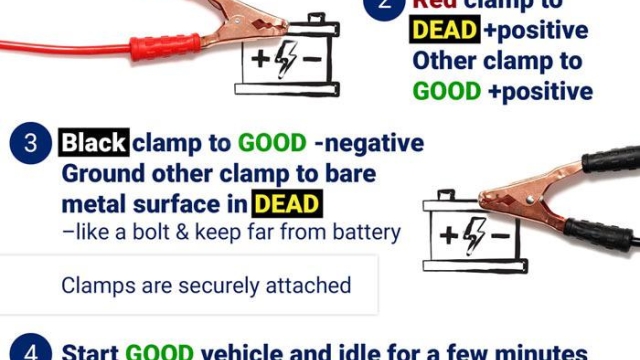Master the Art of Flat Tire Rescue: A Comprehensive Guide for Swift and Safe Tire Changes
Having a flat tire is an inconvenience that no driver wants to encounter, but it’s a situation that can happen unexpectedly. When faced with a flat tire, knowing how to change it swiftly and safely can make all the difference. In this comprehensive guide, we will walk you through the step-by-step process of changing a flat tire, ensuring that you have the knowledge and confidence to handle this common roadside issue.
Before we dive into the specifics of flat tire changes, it’s important to mention that sometimes other car-related mishaps can occur while on the road. From car lockouts to the need for a car jump start, unexpected situations can leave us feeling stranded and helpless. That’s where a reliable roadside assistance service like Rick’s Emergency Roadside Assistance comes in. With their 24/7 availability and trusted expertise, they strive to be your go-to partner for all towing and roadside services in the bustling city of Chicago. Now, let’s focus on mastering the art of flat tire rescue.
1. Car Jump Starts
In times of unexpected battery failure, nothing is more frustrating than being left stranded with a car that won’t start. Luckily, with the right knowledge and tools, you can master the art of car jump starts and get back on the road in no time.
The first step in successfully jump-starting a car is to gather the necessary equipment. You will need a set of jumper cables and another vehicle with a functioning battery. It’s important to ensure that both vehicles are in park or neutral and have their engines turned off before proceeding.
Next, locate the batteries of both vehicles. In most cars, the battery is situated under the hood, often on one side. Once you’ve identified the batteries, it’s time to connect the jumper cables. Begin by attaching one of the red clips to the positive terminal of the dead battery, then attach the other red clip to the positive terminal of the working battery.
Moving on, connect one of the black clips to the negative terminal of the working battery, and lastly, attach the remaining black clip to an unpainted metal surface on the dead vehicle. This step is crucial as it helps prevent sparks and potential damage.
With all the connections securely in place, start the engine of the working vehicle. Allow it to run for a few minutes to provide a charge to the dead battery. After some time has passed, attempt to start the stalled vehicle. If it starts successfully, you can remove the jumper cables in the reverse order of attachment, making sure not to let the clamps touch each other or any metal surfaces.
Remember, while jump-starting a car can often solve a dead battery issue, it is important to address the root cause of the problem. Consult a professional if you experience recurring battery failures or suspect a more serious electrical issue with your vehicle.
By following these guidelines, you’ll be well-equipped to handle any unforeseen battery mishaps, and you’ll be back on the road with minimal disruption to your journey. Stay prepared and confident, knowing that you have the ability to master the art of car jump starts when needed.
Stay tuned for the next section of our comprehensive guide on flat tire changes.
2. Car Lockouts
Getting locked out of your car can be a frustrating experience, but with the right knowledge, you can quickly regain access without any hassle. Here are some essential steps to follow if you find yourself in a car lockout situation.
Firstly, take a deep breath and try to remain calm. Panicking will only make the situation more stressful. Assess if there are any spare keys that can be used to unlock the vehicle. Perhaps you gave a spare key to a family member or friend. If you don’t have immediate access to a spare key, it’s time to move on to the next step.
Next, check if any of the car’s windows are partially open. If you’re lucky, you may be able to carefully slide a long, slim object, such as a wire hanger or a thin rod, through the opening and manipulate the lock mechanism. However, be cautious not to damage the window or any internal components while attempting this method.
If you are unable to unlock the car using the above methods, it’s best to seek professional help. Contact a reputable roadside assistance service like "Rick’s Emergency Roadside Assistance" for immediate assistance. Their experienced team is available 24/7 and can efficiently handle car lockouts with the right tools and expertise. Remember, attempting to forcefully unlock the car yourself using unconventional methods can result in costly damage.
By following these steps and remaining composed, you can successfully overcome a car lockout situation and get back on track without much delay or inconvenience.
3. Flat Tire Changes
Changing a flat tire can be a stressful experience, but with the right knowledge and preparation, you can handle it efficiently and get back on the road in no time. Follow these steps to master the art of flat tire rescue:
- 24 Hour Towing Service
Assess the Situation:
Firstly, ensure the safety of yourself and others by pulling over to a safe location away from traffic. Activate your hazard lights and engage the parking brake for added security. Next, gather all the necessary tools for the tire change, including a spare tire, jack, lug wrench, and wheel wedges. -
Lift the Vehicle:
Locate the jacking points underneath your car by referring to the owner’s manual. Carefully position the jack at the designated spot and start pumping it until the flat tire is lifted off the ground. It’s important to avoid overextending the jack to prevent any accidents or damage to the vehicle. -
Remove the Flat Tire and Install the Spare:
Using the lug wrench, loosen the lug nuts on the flat tire but do not remove them completely just yet. Once loosened, continue jacking up the vehicle until there is enough clearance to remove the flat tire. Fully unscrew the lug nuts and carefully slide the tire off the wheelbase. Now, align the spare tire with the wheel studs and push it onto the base. Hand-tighten the lug nuts as much as possible.
Remember, after replacing the flat tire with the spare, you should seek a professional tire repair as soon as possible. Spare tires are designed for temporary use only and are not suitable for extended driving or high speeds. By following these steps, you’ll be well-prepared to handle a flat tire situation swiftly and safely.

